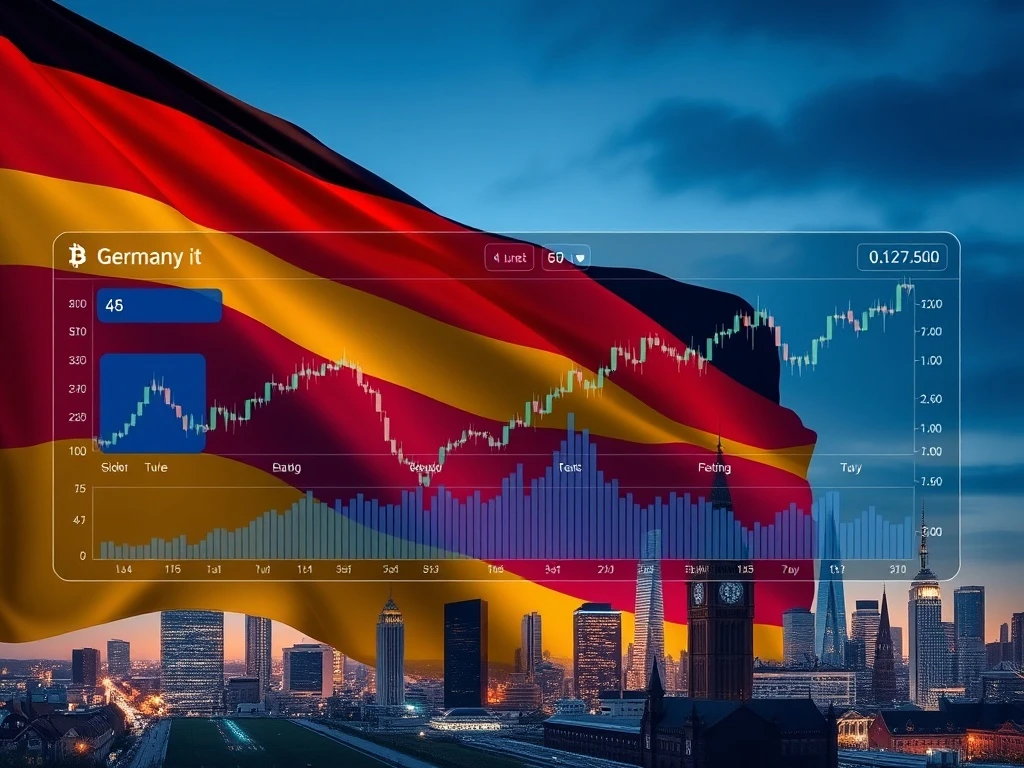Santander Crypto Trading: Openbank’s Transformative Expansion into Germany’s Digital Asset Market

The traditional financial landscape is undergoing a significant transformation. Major institutions are increasingly embracing digital assets. Santander’s Openbank, a fully digital subsidiary, recently made a groundbreaking announcement. It launched comprehensive crypto trading services in Germany. This move signals a pivotal moment for Santander crypto trading and the broader European market. It reflects a growing demand for digital asset access from mainstream banking clients. This expansion positions Openbank at the forefront of crypto integration within traditional finance.
Openbank’s Strategic Entry into German Crypto Markets
Grupo Santander’s digital bank, Openbank, is expanding its reach across Europe. Its newest offering targets German clients amid rising demand for crypto assets. The bank confirmed this development on Tuesday. Customers in Germany can now directly buy, sell, and hold various cryptocurrencies. These include Bitcoin (BTC), Ether (ETH), Litecoin (LTC), Polygon (POL), and Cardano (ADA). All these transactions occur directly on Openbank’s secure platform. This integration eliminates the need for third-party platforms. Therefore, it simplifies the user experience significantly.
Furthermore, this new service integrates crypto alongside Openbank’s existing investment products. This streamlined approach offers convenience to users. Importantly, it operates under the stringent European Markets in Crypto-Assets Regulation (MiCA) framework. This compliance ensures a regulated and secure environment for crypto transactions. Openbank’s launch in Germany highlights a strategic focus. It aims to capture a significant share of the evolving digital asset market. The bank’s commitment to regulatory adherence builds trust among its clientele. This move clearly establishes Openbank Germany crypto services as a major player.
Santander’s Evolving Vision for Digital Assets
The introduction of crypto trading in Germany is not Santander’s first venture into the digital asset space. The Spanish banking giant has explored blockchain technology for several years. In 2018, for instance, Santander launched One Pay FX. This Ripple-powered payments application allowed retail customers to make same-day international transfers. Countries like Spain, the UK, Brazil, and Poland benefited from this service. This earlier initiative demonstrated Santander’s interest in leveraging distributed ledger technology.
More recently, Santander has weighed entering the stablecoin market. The bank explores retail crypto services. It also considers the potential launch of dollar- and euro-pegged tokens. Coty de Monteverde, head of crypto at Grupo Santander, confirmed the recent launch directly responds to customer demand. This indicates a proactive approach to evolving client needs. Santander crypto trading services are also planned to roll out to Spain in the coming weeks. Additional token offerings and features are also expected. These will include crypto-to-crypto conversions. Santander, headquartered in Spain, is one of Europe’s largest banks. It serves over 175 million customers in more than 40 countries. Openbank, its fully digital subsidiary, caters to more than 2 million clients. These clients are spread across Spain, Germany, Portugal, the Netherlands, the US, and Mexico. This broad reach positions Santander for significant impact in the global crypto market.
The Rise of German Banks in the Crypto Space
Santander’s strategic move is part of a broader trend within Germany. The country’s largest banks are actively preparing to integrate crypto services. This is happening under Europe’s unified MiCA regulation framework. Germany has emerged as a leader in crypto adoption among traditional financial institutions. Several prominent banks have already made significant strides:
- DZ Bank: Germany’s second-largest lender, launched a crypto pilot in September 2024. This initiative involved 700 cooperative banks. It utilized Börse Stuttgart Digital’s robust infrastructure.
- Deutsche Bank: Germany’s largest lender, announced plans in July 2025 for a digital asset custody service. This service is expected to launch in 2026. It involves partnerships with Austria’s Bitpanda and Swiss tech firm Taurus. Deutsche Bank’s head of digital assets, Sabih Behzad, also indicated the bank was considering entering the stablecoin market. This could involve issuing its own token or joining existing projects.
- Sparkassen-Finanzgruppe: This financial group recently announced ambitious plans. It aims to roll out retail crypto trading to nearly 50 million German customers. This will happen via its Sparkasse app by mid-2026. DekaBank and Börse Stuttgart Digital will power this service.
These developments underscore a significant shift. German banks crypto initiatives are rapidly accelerating. They aim to meet increasing customer demand for digital assets. The regulatory clarity provided by MiCA further encourages this institutional embrace.
Navigating European Regulatory Landscape: MiCA’s Influence
The European Markets in Crypto-Assets (MiCA) regulation plays a crucial role in this institutional shift. MiCA provides a comprehensive regulatory framework for crypto-asset markets. It ensures investor protection, market integrity, and financial stability. This regulatory clarity is a major catalyst. It encourages traditional financial institutions to enter the crypto space. Banks now have clear guidelines. They can operate digital asset services with greater confidence. The regulation standardizes rules across EU member states. This fosters a more predictable and secure environment for crypto businesses.
Consequently, we are witnessing a surge in European crypto services from established players. The ability to ‘passport’ services across the EU under MiCA is a key benefit. This means a service authorized in one EU country can operate in others without further authorization. However, recent discussions, such as France weighing a ‘passporting’ block, highlight the ongoing evolution and interpretation of MiCA. Such debates underscore the dynamic nature of crypto regulation. Nevertheless, the overall framework provides a strong foundation. It supports the expansion of regulated crypto offerings by banks like Santander. MiCA’s implementation is a game-changer. It is transforming how financial institutions approach digital assets across the continent.
Global Crypto Adoption Trends and Future Outlook
The trend of traditional finance embracing cryptocurrencies is not confined to Europe. Similar developments are unfolding in the United States. Following the passage of the GENIUS Act in July 2025, several major banks began exploring new avenues. These include JPMorgan, Citigroup, and Bank of America. They are actively considering stablecoin issuance and retail-facing crypto services. This demonstrates a global recognition of digital assets’ potential. Institutions are acknowledging the need to adapt to evolving client preferences.
The integration of crypto into mainstream banking is a significant step towards wider adoption. It brings legitimacy and accessibility to digital assets. This move also highlights the increasing convergence of traditional finance (TradFi) and decentralized finance (DeFi). The article mentions TradFi is building Ethereum L2s to tokenize trillions in Real-World Assets (RWAs). This further illustrates the depth of institutional interest. The future of finance appears increasingly digital. Banks are positioning themselves to play a central role in this transformation. Their involvement ensures regulated access and fosters greater trust in the crypto ecosystem. This continuous evolution will likely reshape global financial markets significantly.






